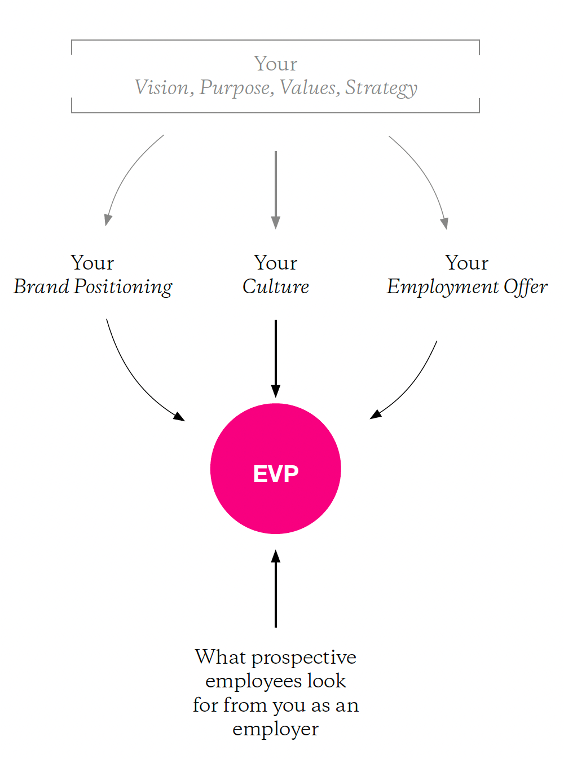We do a lot of work in the employee engagement space. The last few years have been really unsettled for everyone, with pandemics, floods, economic pressures and staff shortages. That’s caused many of us to rethink our priorities, including at work. And that’s also meant employers – including ourselves - have had to work much harder to attract and retain good people.
I often get asked how we go about developing an effective Employee Value Proposition (EVP) with a client. This blog outlines some of the key upfront thinking we take into an EVP project.
We are firm believers in the value of a strong brand – internally and externally. Organisations have multiple expressions of their brand including their customer, employer, community and investor brands. While each has some subtle differences in emphasis, they all represent who the organisation is, what they stand for and why the intended audience should choose them. This thinking is our starting point for developing an EVP – it must align with your core brand positioning.
Employee brands don’t live in isolation but co-exist in the public eye alongside your core brand promise. The two must add to and gain value from each other. Staff – prospective and existing – are part of the wider community and their impressions of you as an employer are influenced by their interactions with the brand and by what they see and hear in the media. It’s not surprising then that some of the most valuable brands in the world are also recognised as some of the best employers in the world. Even here in Aotearoa New Zealand, hero brands like Air New Zealand and Whittaker’s are celebrated employers of choice.
Your core brand story is the first foundation of a good EVP.
The second foundational layer we seek to incorporate into your EVP is the culture of the organisation. Culture defines what’s important at your place and how things get prioritised and done. It therefore informs the sort of people, skills and attributes an organisation needs and is best suited for. Reflecting your culture in your EVP has a number of benefits:
- It ensures the EVP feels authentic and resonates with existing staff, meaning they are more likely to be advocates for it when they speak to others about what it’s like to work at your place.
- It supports a smoother, and less jarring, experience when new staff join. They are able to see what you said in the recruitment process in their day to day working environment. This reduces the chances of post-joining dissonance and sets people up for a longer, happier career with you.
The third key input into your EVP is your employment offer – what is it you have and give that excites prospective employees to join. This includes a variety of elements from hard benefits like pay, leave, development, flexible work conditions and training and development opportunities through to less tangible benefits such as career progression, your approach to inclusiveness, diversity and wellbeing, social purpose, community support and many others.
While it’s important to use the EVP to express what it is you offer, it is even more important to be clear about your target audiences and what it is they are looking for.
In recent years, we’ve seen a number of changes in what employees – especially the younger generations – are looking for from their employer. Purpose, meaning, flexibility, and making a difference have risen in importance while environmental conditions, pay levels and training benefits have become hygiene factors.
Expressing a clear employee WIFM (what’s in it for me) is core to how we approach all EVP projects. This answers the question – why should I work there? We also work through the engagement process potential employees go through in selecting you – awareness, interest, desire and action – and the messages and channels best suited to helping them advance through each stage.

A good EVP will engage audiences at both an emotional and rational level – making prospects feel good about the organisation and giving them the evidence to justify the decision to join. We therefore look to use a combination of messages, mediums and channels to engage with existing and prospective staff. For example, we often use story-telling video, including giving staff a voice to talk about the organisation, to make an authentic human connection.
This thinking drives our approach and forms the basis of our initial Discovery stage. This stage involves a lot of research and analysis, from reviewing your staff satisfaction and exit interviews through to running workshops (and/or surveys) with leaders, staff and recruitment partners. With clarity on all the areas above we can articulate your EVP story and create a story-telling toolbox to get your proposition out there in the strongest and most consistent way, across roles and audiences.

